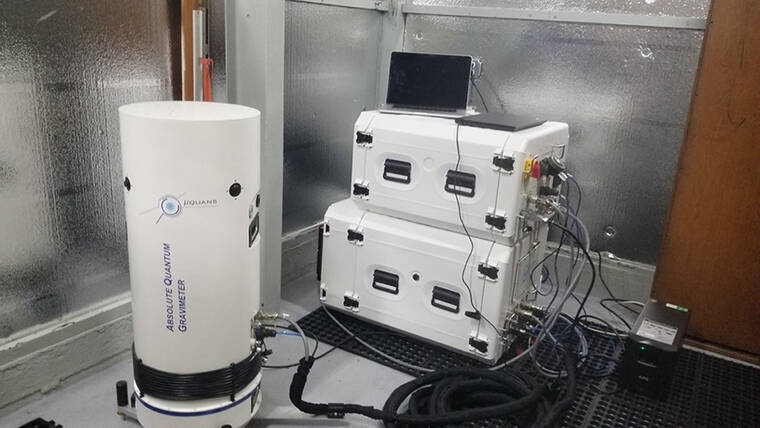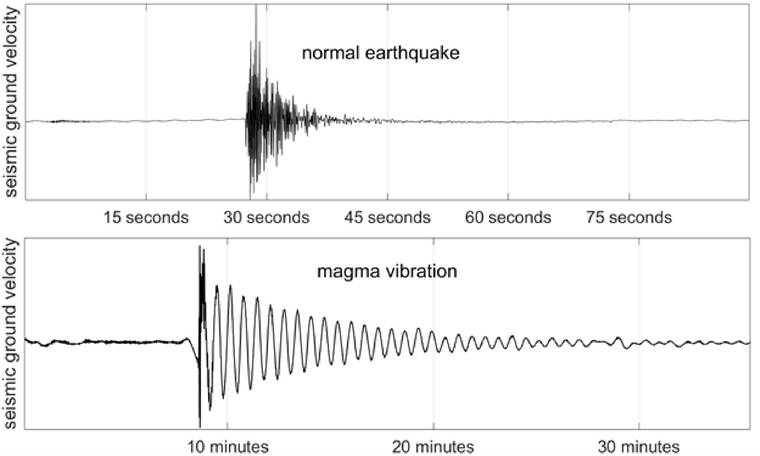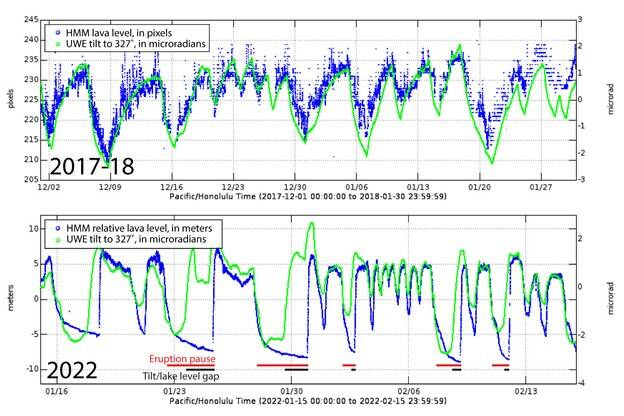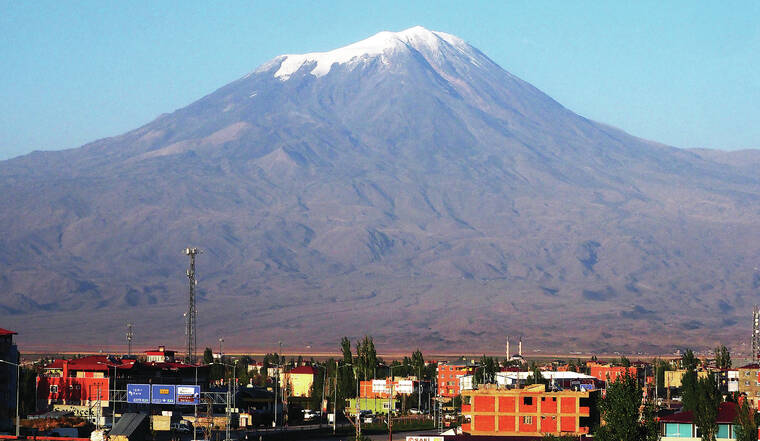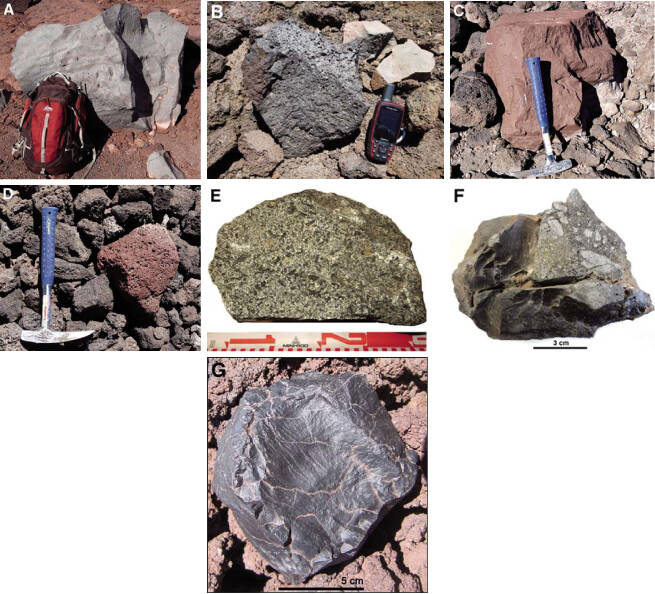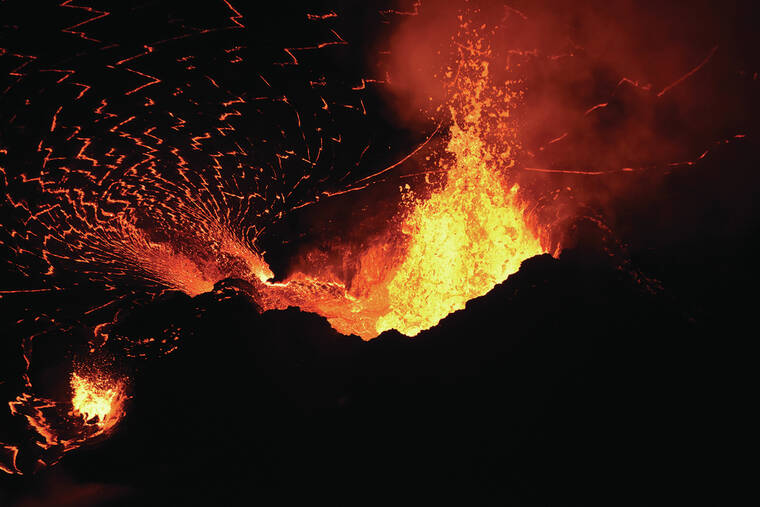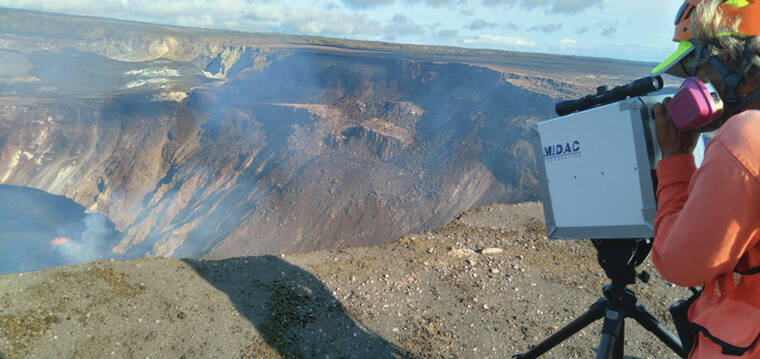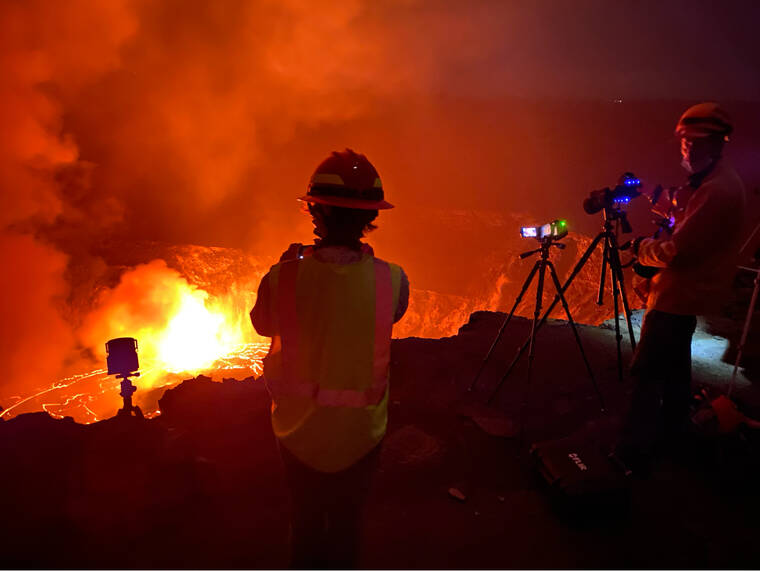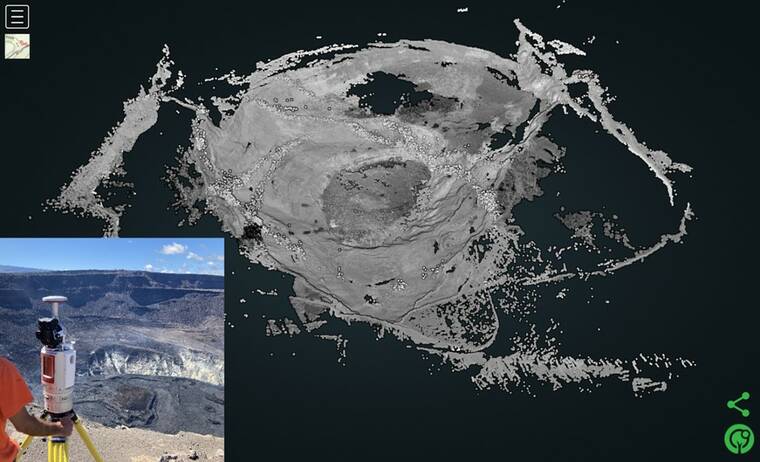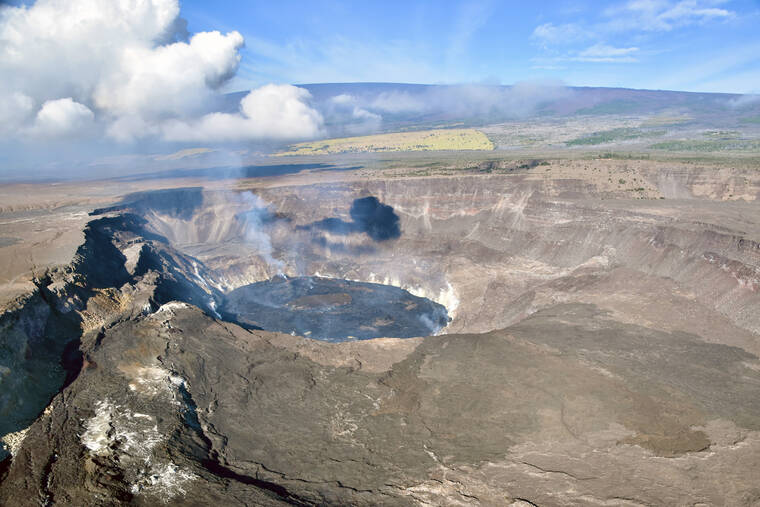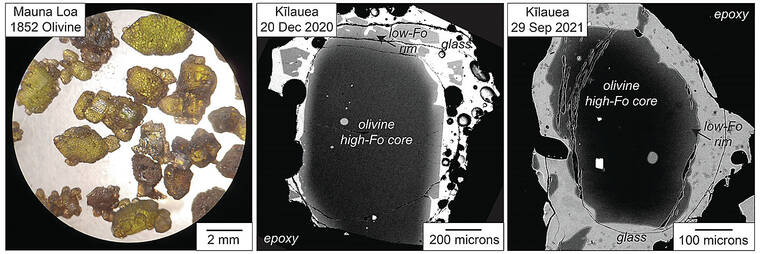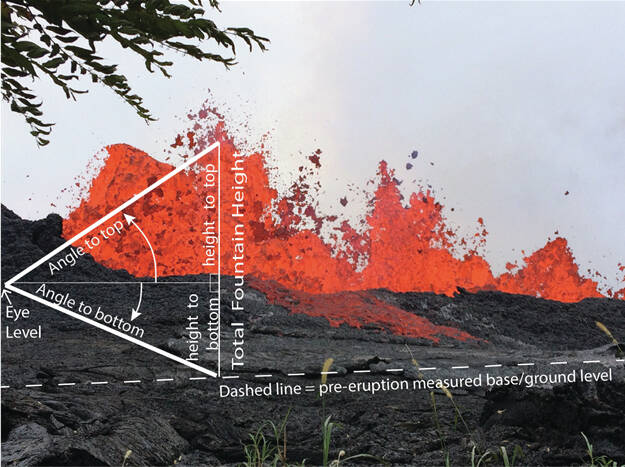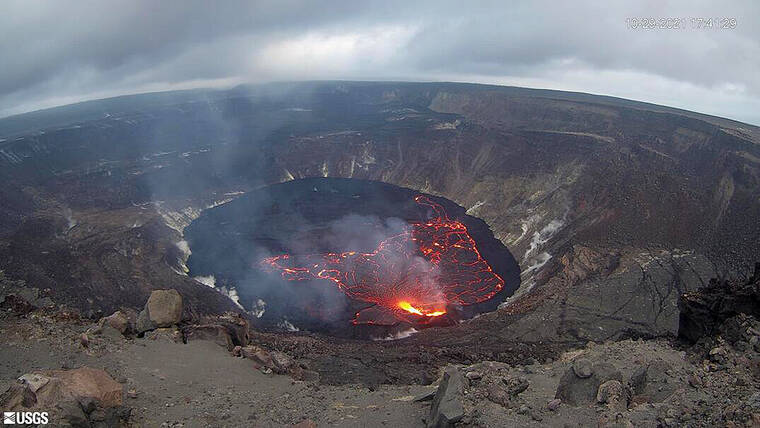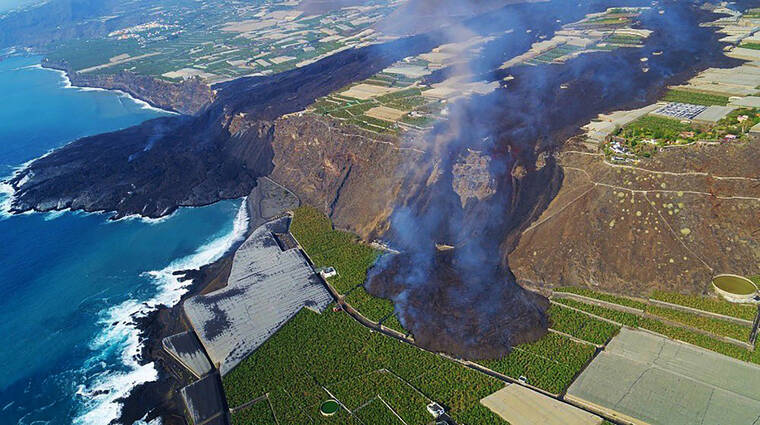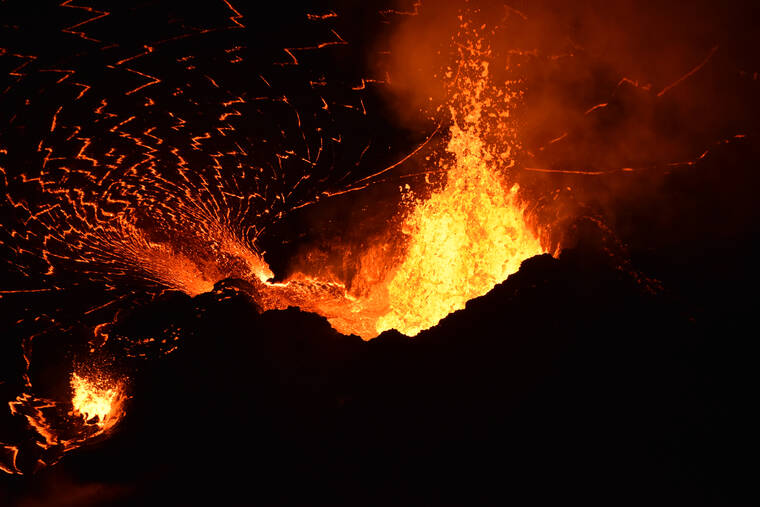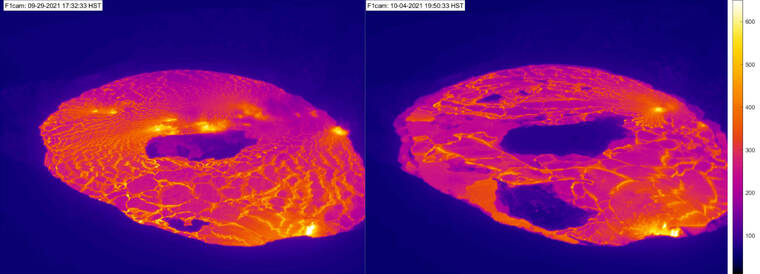New instrument with new potential: The Absolute Quantum Gravimeter
All objects have a mass and therefore a gravity field. Earth’s gravitational pull is slightly stronger in areas with more mass and slightly weaker in areas with less mass. Gravimeters measure gravitational attraction.
Volcano Watch: Magma chamber music can tell a revealing tale
In a lava lake, such as the one present from 2008-18 in Kilauea’s summit Halema‘uma‘u crater, we can sometimes visually observe these fluid motions as ripples or sloshing of the surface following disturbances from rockfalls or gas bursts.
Volcano Watch: Comparing today’s Kilauea summit lava lake with past observations
The Feb. 3 installment of “Volcano Watch” introduced some of the data streams that are used to monitor eruption pauses and renewals at Kilauea’s summit, including ground tilt from borehole tiltmeters. Tilt data also provided valuable insight into the behavior of the lava lake that occupied Halemaʻumaʻu crater from 2008-18, before the series of collapses in 2018 changed Kilauea’s summit topography.
Volcano Watch: Was volcanism in eastern Turkey related to Bronze Age floods?
Question: what is arguably one of the most widely recognized volcano names in the world due to its references in the Old Testament?
Volcano Watch: Tonga eruption recorded on Hawaii infrasound network and globally
Hunga Tonga-Hunga Ha’apai is located about 40 miles north of the Tongan capital city of Nuku’alofa. As with many volcanoes in Tonga, the part of the volcano that is visible above water is small compared to the submarine extent of the edifice and eruptions can alternately grow new land or destroy any islands that are formed.
Volcano Watch: Deciphering explosive behavior at Mauna Loa
Mauna Loa is known for its effusive eruptions that produce spectacular lava flows. However, some of the volcanic products found on Mauna Loa are pyroclastic or explosive in character.
Should old eruptions be forgotten? Increase your volcano awareness this January
We traditionally spend the New Year singing “Auld Lang Syne,” a song that reminisces about times long past. For the first month of the New Year, staff at the USGS Hawaiian Volcano Observatory (HVO), and hopefully you too, will reflect on past and ongoing eruptions during the annual Volcano Awareness Month.
Infrared measurements help HVO scientists unravel Kilauea’s gas chemistry
Most people in Hawaii know about sulfur dioxide (SO2) gas, the major component of vog. But, have you ever found yourself wanting to know the SO2/HCl (sulfur dioxide/hydrogen chloride) ratio in volcanic gas? Or the amount of CO2 (carbon dioxide) dissolved in volcanic glass?
Volcano Watch: HVO’s ongoing recovery from the 2018 Kilauea eruption
During the events of 2018, HVO instruments were lost, monitoring infrastructure was impacted, and HVO staff had to evacuate the observatory, which was damaged beyond repair.
Volcano Watch: HVO innovation, 3D application
The electronics workshop at the USGS Hawaiian Volcano Observatory (HVO) buzzes with creative activity. It’s like Santa Claus’ workshop — for volcano science. Workbenches line the walls of the room, cluttered with things in the making: pliers, wires, and bottles of glue; voltmeters, calipers, and microchips, too.
Volcano Watch: Terrestrial laser scanning of Halemaʻumaʻu
A technique called structure-from-motion then uses motion parallax to construct a two-dimensional map or three-dimensional model of the area by matching the same features across multiple images.
Volcano Watch: The refilling of Halema‘uma‘u crater
Halema‘uma‘u crater has undergone repeated changes during the past two centuries. Prior to 1924, the size and shape of the Halema‘uma‘u lava lake changed frequently and lava commonly spilled out across the floor of Kilauea caldera.
Three decades of Volcano Watch
David Clague, former Hawaiian Volcano Observatory Scientist-In-Charge, initiated this series of weekly articles in late-1991. He was the primary author until March 1995, when the HVO staff — and eventually other partners — began contributing.
Volcano Watch: Tracking magma movement using olivine crystal ‘clocks’
Lavas and their minerals erupted from Hawaiian volcanoes provide clues to the history of the magmas that are eventually erupted. Kilauea’s recent summit eruptions allow us “a glimpse inside” the volcano and the chance to learn more about where the magma erupted in Halema‘uma‘u crater came from and how quickly it moved to the surface.
Volcano Watch: How high is that lava fountain?
Kilauea still spurting lava, 1 month into latest eruption
Lava continued to pour out of Kilauea’s summit crater Friday, one month after the latest eruption began.
Volcano Watch: The Canary Islands ‘mega-tsunami’ hypothesis, and why it doesn’t carry water
Volcano Watch: Large earthquake a reminder to ‘Drop, Cover, and Hold On’
Pele’s show continues
Kilauea volcano has erupted more than 4.2 billion gallons of lava since its current summit eruption began Sept. 29.
Volcano Watch: What’s that rising from the lava lake?
The past year has seen fluctuating lava lakes, ephemeral lava fountains, craggy spires, and drifting “islands” reminiscent of pre-1924 Halemaʻumaʻu activity at the summit of Kilauea. The recent activity has USGS Hawaiian Volcano Observatory (HVO) scientists reflecting on prior observations and how they compare to recent activity.

